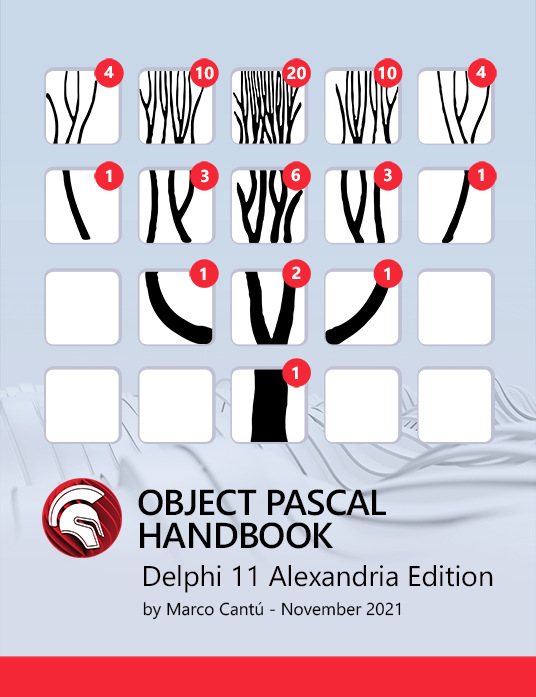
A cross-platform GUI is a great tool for designing apps and software that can run seamlessly on: Android, iOS, macOS, Windows, and Linux. So why create apps for different platforms when you can make one for all in less effort and expense? This article will teach you how to make a cross-platform GUI in RAD Studio which supports C++ and Delphi using very easy and simple steps. We know from search logs that people often ask how to make a GUI in C++? So, we’ll talk about just how to do that in this article.
Each platform: Android, iOS, macOS, Windows, and Linux, has its own series of steps for building and deploying apps. For a program to function properly, its compiled program code must be compatible with the platform it is to run on. At the operating system level things like file handling, menu handling, the appearance and functionality of controls work differently or have different capabilities on different operating systems. By picking the right cross-platform development tool, there is no need to produce different program code when jumping from one platform to the other to make it compatible with tablets, smartphones, desktops and so on. We’ll show you how to make apps with a GUI to take advantage of cross-platform functionality to the fullest extent possible.
Table of Contents
Why do developers use a cross-platform GUI?
A cross-platform application which offers a single code base from which to target multiple types of devices offers a myriad of opportunities and advantages. One of the main reasons developers prefer this is because it takes less time, and this helps translate into it being very cost-effective for clients. The following are key advantages and justifications for choosing cross-platform GUIs for mobile application development.
- It can be easily updated.
- Easy maintenance
- Code reusability and sharing of code between projects
- This leads to developer efficiency
- Cloud integration
- Consistency in UI components
- Fewer technical barriers
- Easy hosting
- Accelerated time to market
In straitened times where profitability is under pressure from outside factors many businesses do not have huge budgets to afford building apps for different platforms to reach the maximum audience, so they end up giving up the idea of building an app. However, choosing a cross-platform app development solution which reduces outlay on development costs and time thanks to a single code base and the possibility for a single developer can make that outlay more affordable.
How can picking the right cross platform solution save money?
The right cross platform solution can mean that a single set of program code which often needs little, or no modification can run on any operating system and mobile device. Any future projects can utilize the same code as well. You can save time using a single code base for several platforms, enabling your client to launch their app/software on schedule. Compare this to other solutions where companies have IDEs or build tools which can only target a single device platform so that there are multiple incompatible projects and code bases, often written in completely different programming languages which frequently also demands there be multiple developers to write and maintain them. It’s really not that difficult to see how this is going to be exponentially more expensive, inefficient, and error prone as time goes on.
Cross-platform programs are simpler to modify and customize. The single source and project simplify the processes to update and manage. Using the right C++ build tools and IDE allows developers to apply contemporary methods and built-in ‘intelligent assistance’ to the coding process, software design patterns, performance, and code safety by helping the developer bring out the best from the programming language with minimal effort and learning curve. The solution which fulfils all of these criteria and gives you the productivity and efficiency boost you need is RAD Studio from Embarcadero.
How to create a cross-platform GUI?
Here are some tools you can use to create a cross-platform GUI:
RAD Studio
Single Code Base
Create apps for all major platforms with less coding effort. Write once, compile everywhere.
Windows 11
Modernize VCL apps for Windows 11 with up-to-date user interface controls, WinRT APIs, and HighDPI-related features
Remote Desktop
Collaborate more effectively with remote teams using improved remote desktop support for VCL and IDE
High DPI & 4K
High-DPI support in the IDE, with full support for the latest 4k+ monitors, and cleaner and sharper fonts and icons throughout. Improved FMX High-DPI support for Windows and Desktop with a visibly superior desktop UI
iOS and macOS
macOS 64bit ARM compiler and toolchain that can build universal binaries including Intel/ARM versions for AppStore submissions
Android
Support for the latest Android 30 API and latest Billing APIs, and migration to use the AndroidX libraries. Android support for multiple classes.dex files, simplifying integration of external Android dependencies
Accessible Data
Connect to over 20 databases natively with FireDAC’s high speed direct access, including InterBase, SQLite, MySQL, SQL Server, Oracle, PostgreSQL, DB2, SQL Anywhere, Advantage DB, Firebird, Access, Informix, MongoDB and more
Faster Coding
Smarter code navigation when refactoring. Auto code completion with Tab key. LSP awareness of Include files. Auto restart of LSP server. Class helper support. Array suggestions when assigning arrays
Productivity
VCL Styles with design-time support: Prototype stylish UIs even faster by seeing immediately at design-time how your styled forms and controls will look when running.
Linux
Develop both server and FireMonkey GUI applications for Linux
User Experience
Completely rebuilt Welcome Page with a native look and feel, and a UI that fits the IDE, and customizable layout and content
Cloud Aware
Use the HTTP and REST client libraries, available on all platforms, to invoke REST services or AWS and Azure components.
Extensions
Develop and expand the IDE with your own components and IDE plugins, or find ready to use add-ons from our rich third-party ecosystem
RAD Server
Reduces the complexities of rapidly building and deploying a multi-tier turn-key enterprise REST API application server with Swagger support.
What is FireMonkey?
Behind RAD Studio, Delphi, and C++Builder lies the multi-device, real native app development and runtime platform that is known as the FireMonkey framework. FireMonkey is a visual component library that supports advanced graphics, animation, and style. FireMonkey apps may be created for any of the three main target platforms. RAD Studio also offers a similar framework called VCL, the Visual Component Library, which targets the Windows operating system exclusively.
C++Builder offers FireMonkey, sometimes referred to as FMX, as a multi-device application framework. FireMonkey was developed for single developers or teams working to swiftly release native programs for Windows, macOS, Android, Linux, and iOS to app stores and companies. We offer a comprehensive application stack with C++ Builder that includes a user interface, database, networking, inter-device communication, and other libraries and runs on all platforms. Apps built in C++Builder support Windows and iOS while apps built in Delphi (Object Pascal) support Android, iOS, macOS, Windows, and Linux. For a full breakdown of all the supported device targets refer to the feature matrix.
How can FireMonkey save time and money?
Typically, creating a mobile app will entail learning several different programming languages and tools, such as Xcode for iOS and Android Studio for androids, and then adapting and rewriting the same code and functionality to fit each platform’s display and UI requirements. FireMonkey offers a superior alternative as it offers a “write once, works anywhere” approach which means the developer designs the screen in a single screen designer which shows how the screens of the app will look in each operating system and device environment. The apps are compiled from these multi device layouts and one set of program source code to automatically produce a separate app package which then gets installed on the devices. It’s a magnificently concise and efficient way to develop apps with absolutely minimal compromises.
Application users have become used to beautiful user interfaces and simple user experiences, and developers who can create for several platforms are in high demand. This need is surely met, and you can easily build an amazing GUI with FireMonkey. Teams who want to quickly develop multi-device, native apps for Windows, macOS, Android, Linux, and iOS and get them into app stores and business settings should use FireMonkey and RAD Studio.
Is C++ Builder the answer to your cross-platform app development needs?
A powerful yet easy to use tool for developing computer programs is C++Builder. Hailing from Embarcadero Technologies, C++Builder is a rapid application development environment for building C++ applications that are intended for Windows and iOS. It adheres to ANSI C and C++ standards and augments this power with specially tailored parts of existing libraries as well as a rich ecosystem of add-ins, experts and component libraries.
We can help you develop a multi-device C++ app by briefly discussing the few steps. First, you need to start coding on C++ on Windows by creating a FireMonkey desktop project for Windows 32-bit; then, different platforms can be added here. A C++Builder cross-platform app will only target Windows 32bit, Windows 64bit, and iOS 64Bit. The newest Boost libraries, standard libraries, and the ISO C++11 language standard are also supported by the 64-bit compiler.
How can I develop iOS and macOS apps without using an Apple Mac?
A small app called The Platform Assistant Server, or PA Server, needs to be installed on a Mac OS X target system, and the IDE must be configured on Windows for C++Builder to support multi-device application development. The PAServer acts as a bridge between the RAD Studio/C+++ Builder running on Windows and the macOS operating system. Apple’s code signing and certification process requires the use of a Mac – either a genuine physical device or a cloud-based Apple approved virtual Mac – to carry out some of Apple’s required compilation and packaging operations. After configuring your development environment, you may utilize the IDE to construct your first C++ multi-device Windows and iOS application. This video goes into more detail introducing you to RAD Studio and C++ Builder.
Are you prepared to enter a new era of productivity and make your own cross-platform GUIs?
Even though software development is growing more sophisticated with a greater range of device types and operating systems to target than ever before targeting cross-platform apps should not require you to compromise on your creativity and ideas. RAD Studio and C++ Builder is key to trimming back the effort involved to the bare minimum and getting the best out of your time and budget to produce the very best-looking professional quality cross platform GUI apps.
Are you eager to create your own cross-platform apps and boost your productivity? Download the RAD Studio free trial today.
Design. Code. Compile. Deploy.
Start Free Trial Upgrade Today
Free Delphi Community Edition Free C++Builder Community Edition




